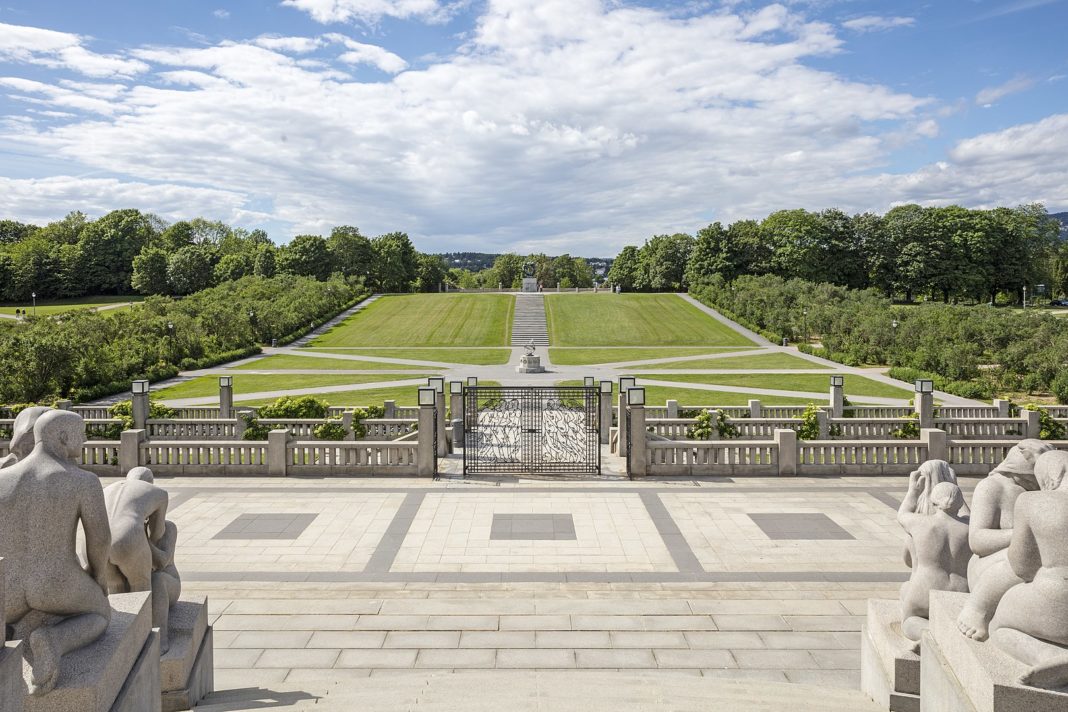Frogner Park (Frognerparken) is a public park located in the West End borough of Frogner in Oslo, Norway. The park is historically part of Frogner Manor, and the manor house is located in the south of the park and houses the Oslo Museum. Both the park, the entire borough of Frogner as well as Frognerseteren derive their names from Frogner Manor.
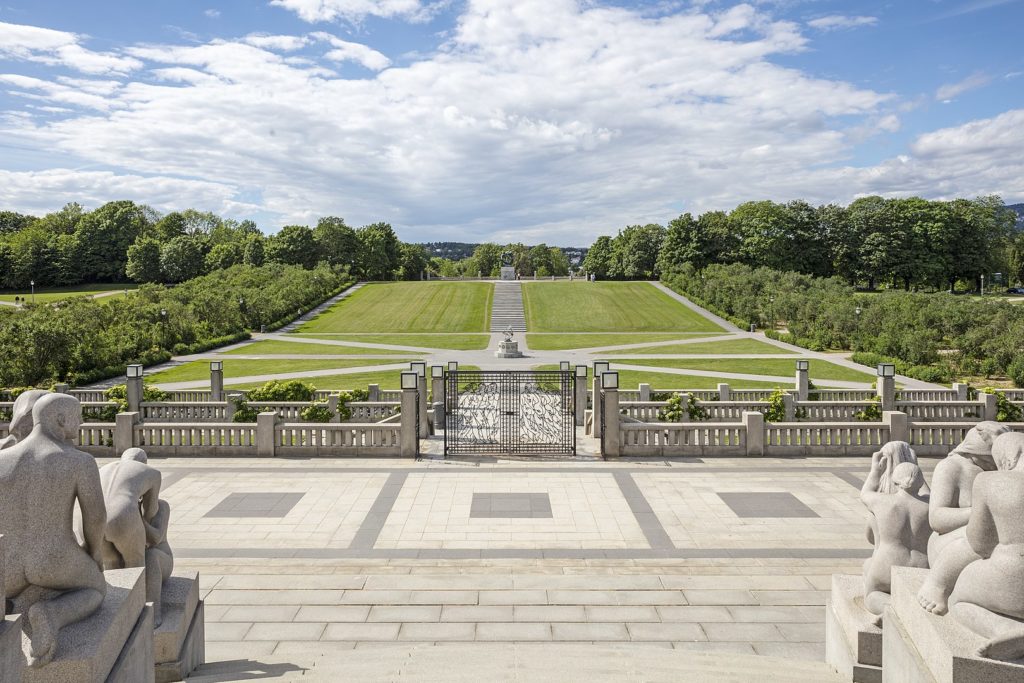
Frogner Park is the largest park in the city and covers 45 hectares; the sculpture installation is the world’s largest sculpture park made by a single artist. Frogner Park is the most popular tourist attraction in Norway, with between 1 and 2 million visitors each year, and is open to the public at all times.
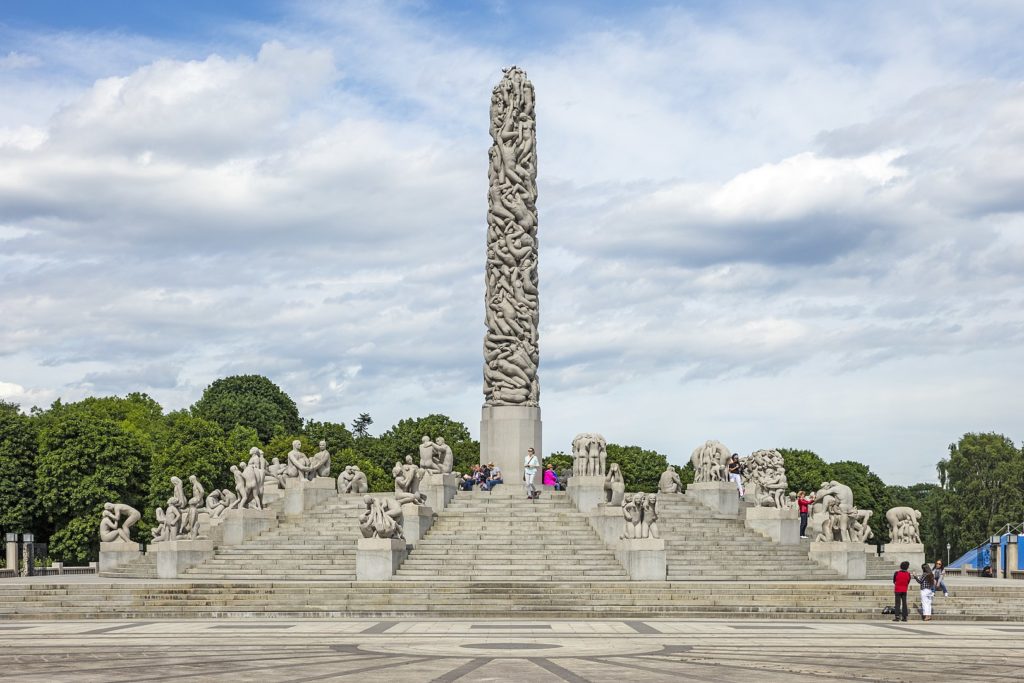
Frogner Park contains, in its present center, the Vigeland installation (Norwegian: Vigelandsanlegget; originally called the Tørtberg installation), a permanent sculpture installation created by Gustav Vigeland between 1924 and 1943 It consists of sculptures as well as larger structures such as bridges and fountains. The installation is not a separate park, but the name of the sculptures within the larger Frogner Park.
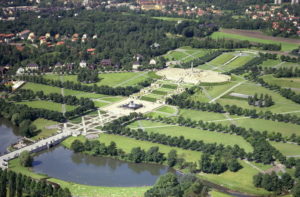
The sculpture area in Frogner Park covers 320,000 m2 and features 212 bronze and granite sculptures, all designed by Gustav Vigeland. The Bridge was the first part to be opened to the public, in 1940. The Bridge forms a 100-meter-long, 15-meter-wide connection between the Main Gate and the Fountain, lined with 58 sculptures, including one of the park’s more popular statues, Angry Boy (Sinnataggen). Visitors could enjoy the sculptures while most of the park was still under construction. At the end of the bridge lies the Children’s Playground, a collection of eight bronze statues showing children at play.
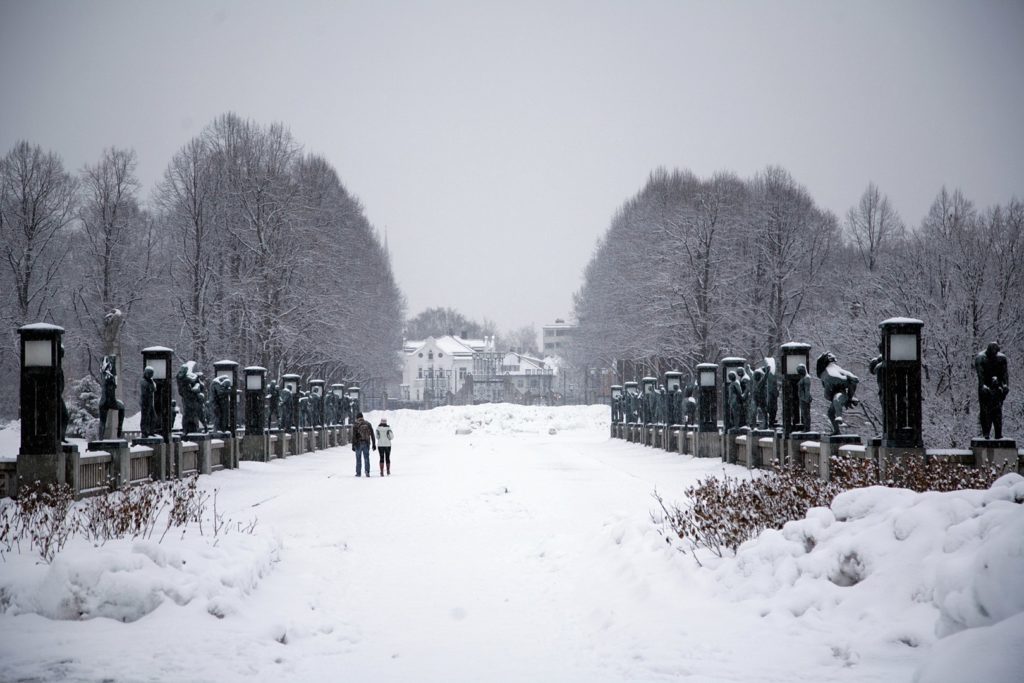
The latest addition to the park is a statue titled Surprised (Overrasket), originally completed in plaster in 1942 only months before one of the models for the work, Austrian refugee Ruth Maier, was sent to Auschwitz and murdered. A bronze cast made in 2002 is now installed in the park.
According to Wikipedia





